- Home
- Alistair Moffat
The Secret History of Here Page 30
The Secret History of Here Read online
Page 30
Walter Elliot edited the Walter Mason Papers and, to add to what I have discovered about the story of our farm and its environs, he has been re-reading them. This morning Walter emailed to say that he had found a wanted poster from 1821 and notice of a crime committed only a few hundred yards from where I write this.
The House of Moat [this is the ruined cottage at the eastern entrance to the Howden Motte] in the Parish of and County of Selkirk was yesterday broken into while family were at Church and there were stolen Two Bank Notes of Five Pounds each with a Promissory Note by the Agent in Hawick for the British Linen Bank, dated May 1821, payable to a person or persons of the name of Shortreed for £52 and a Red Turkey Leather Pocket Book in which they were contained.
A strong suspicion lyes against William Robertson or Robinson, Carter in Selkirk (against whom a warrant is issued) who left Selkirk yesterday morning and has been traced across the County to Yarrow Water on his way to Moffat. All Constables and others are hereby requested to aid in his apprehension.
Robertson when he left Selkirk was dressed in a blue coat, yellow striped waistcoat, blue-grey pantaloons and short half boots, having iron heels. He is about 23 years of age or so, five feet five or six inches high, black hair and dark complexion.
What strikes me is the amount of cash left in a relatively humble abode – and the likelihood that William Robertson or Robinson knew it was there. The cottage was tiny and primitive, with only two rooms and no direct water supply. The other surprising element is the detailed description of the suspect, even down to the colour of his pantaloons. He sounds like a dandyish figure, certainly well dressed for a carter and not someone who was trying to move around unnoticed. There is clearly more to this tale than meets the eye. In any case, Robertson was eventually arrested, having probably evaded capture for about ten months, tried on 22 April 1822, found guilty of housebreaking – and condemned to death.
In the Borders, the condemned were held in Jedburgh Jail. Before the castle was rebuilt in 1823, the cells near the police station and the Sheriff Court House were used. A scaffold was probably set up near the site of the castle at Galahill (Gallows Hill) or perhaps near the court house and a date of 28 May set for Roberston’s execution. It was an expensive business, costing £35, half of which went to Williamson, the hangman. It seems that both he and the gallows were brought from Edinburgh. There were costs for bodyguards, a man who might have been an assistant executioner, as well as the accommodation, food and ale needed to sustain them. The prisoner himself appears not to have incurred any costs.
There exists no surviving account of William Robertson’s execution, but a year later Robert Scott was convicted of murdering two men after Earlston Fair and a ‘frivolous quarrel’. It seems that too much ale and whisky had been taken. It was decided to hang Scott on the spot where the double murder had happened, perhaps as a deterrent, certainly to attract a crowd. Here is part of a long description of what took place:
A very strong and ponderous Gallows was made in Edinburgh which was sent out on two double carts, and erected on the very spot where the murders were committed, a few days before the execution. On the morning of Wednesday last, pursuant to his sentence, Scott was taken from the Castle of Jedburgh, and placed on a cart, with his back to the horse’s tail, and the executioner facing him. The Sheriff of Roxburghshire, attended by his officers, and a strong party of the Yeomanry Cavalry of the county, escorted the melancholy procession to the limits of the shire, where the unhappy man was delivered over to the Sheriff of Berwickshire, who was similarly attended, and who conducted himself to the fatal tree which was not above a stone cast from his own house.
Soon after appearing on the Scaffold, a psalm was sung, in which Scott willingly joined, and then a most appropriate prayer was put up on his behalf, by one of the Clergy men who had so kindly attended him. He afterwards stepped forward to the railing, and, in a most earnest and impressive manner, addressed the numerous multitude of spectators assembled round the scaffold, in a short speech in which, among other things, he solemnly besought them not to allow their passions, at any time, to get the better of their reason, nor, to indulge themselves, on any account whatever, in drinking ardent spirits to excess, which always inflamed the passions, and rendered them uncontrollable; a sad example of the effects of violent and ungovernable passion, he said was now before them, in the melancholy case of him who now, for the last time, addressed them.
He concluded, by hoping that none who now heard him would ever be so cruel as cast up to any of his innocent children his crimes or his shameful end. He then shook hands with some around him, and bowed to others, then immediately mounted the fatal drop; and, while the executioner was adjusting, the rope round the beam, he was most earnest in private prayer, with his hands clasped. In a few minutes, he dropped the signal, and was instantly launched into eternity a little after 3 o’clock. After hanging about thirty-five minutes, the body was cut down, placed in the cart, covered with a sheet, and sent into Edinburgh, for Dissection.
Robert Scott was a tall athletic strong man, apparently about 44 or 45 years of age and left a wife and five children to deplore his loss.
Until I read this account, I had not realised that the condemned were accorded the dignity of deciding exactly the moment of their own death. With the noose around his neck, Scott prayed, then ‘dropped the signal’ and the trap opened beneath his feet. A professional hangman should have made sure that the drop would break the condemned man’s neck, for if it did not, he would have spent an agonising few minutes choking to death, wriggling, kicking his legs and pissing himself. The phrase ‘hangers-on’ comes from those who hung on a hanging man’s legs to choke him and hasten his death.
Executions were rare in the Borders, but they always attracted large crowds. Condemned to death but nevertheless enterprising, one man who met his end in Hawick had produced a pamphlet about his life and crimes, and before he was hanged he encouraged the crowd to buy copies. The proceeds would be given to his soon-to-be-orphaned children. More than five hundred were sold but the condemned man’s speech and the promotion of this extraordinary piece of posthumous publishing went on so long that the Sheriff had to remind him that they didn’t have all day.
30 October
Persistent mist, probably low cloud, has screened the sun so much that it is possible to look directly at it. It appears like a reflection from an old mirror, speckled and dimmed with age.
31 October
On an undated map, drawn sometime after 1856 (because it shows Selkirk railway station and it opened that year) but before 1897, the Henhouse is represented accurately and in some detail for the first time. The three stone looseboxes extend from the southern gable and are the same length as the cottage. The old semi-circular porch is marked, a garden laid out where the stables are now, and between it and the house runs a fence with a gate, presumably in case a horse got loose. A well is plotted in a small wooded area to the west. There is absolutely no sign of it now.
A path leads up where the Bottom Track runs now, but instead of turning east to link with the Long Track, it leads directly north over the ridge where the Top Wood stood and goes on to the Haining. All around is policy ground: open grass parks with stands of hardwood trees. On either side of the whole run of the Long Track runs an avenue of more hardwoods. To the east stand thirty-five trees and two dense copses, and to the west is a longer line of forty-three trees. They must have looked magnificent, especially as their autumn colours came in.
It was very cold indeed this morning, an unseasonal minus seven, and I wonder if the usual tabloid predictions of a severe winter might for once be right. It is certainly starting early and we are burning through the logs, with the new woodburner blazing all day.
The landscape was frosted white and long shreds of mist floated over the Tile Field. As the sun strengthened, rose and reached the shaded parts and the mist drifted westwards, I felt a fine, gentle spray on my face for a few moments, even though the sky was blue an
d clear. It must have been the morning mist dissolving.
On the Top Track, I noticed something strange, several long and straight strands of bright, white thread on the ground, crisscrossed in a geometrical pattern. I bent down to touch one and it snapped, one end suddenly curling as though there had been tension on it. They were the gossamer remains of spider-weaving, strands that had reached right across the track and between the trees and bushes. In the cold of the early morning this tracery of natural lace had become heavy with frost and then fallen. But quite why they had come down in straight, unbroken strands I don’t know.
Wearing his harness, holding the pad of chalk on his breast, the ram was in with his ewes to do his annual duty. He was sniffing at one as we passed. Coy, she moved on, nibbling the grass, but did not stray too far from him. After a brief courtship and consummation, the bright pink of the chalk will be left on her back, and so it is a simple matter to tell if all the ewes in that park have been tupped. Another promise of next spring to go with the daffodils.
November
1 November
In the soft rain of a dripping morning, more scents are released as the leaves turn brown and are tinged with rotting black. Sometimes I think the earth itself is rich but its odour is difficult to describe, perhaps because it is so elemental and singular. Humus is the Latin word and if somehow an adjective could be fashioned from it, those syllables and overtones might be apt.
A young robin, still small and without the puffed-out, busty red breast of the adult birds, was hopping from one fence post to another. On the corner, he waited until Maidie and I had safely passed before he sang his autumn song.
The mares stood together in the rain, heads down, drookit, feeling sorry for themselves.
2 November
The spine of our house is a steep, narrow stone staircase of twelve treads that turn through one hundred and eighty degrees to reach the first floor. Beautifully made, perfectly keyed together and worn by two centuries of tired feet going upstairs to bed and coming down for breakfast in the morning, the stairs are all that is unchanged inside the house. On the top four treads are patches of red-leading ingrained in the stone. Too narrow for people to pass each other, they forced frequent waits at the top and bottom. They still do.
In the 1861 census, the Wilson family had taken the place of the Spidens. Three generations lived in the little cottage under the watchful eye of the Head of the House, Nicholas Wilson, a sixty-year-old widow and formerly a shepherd’s wife. It was rare but not unknown for Nicholas to be used as a female Christian name. Perhaps, like my grannie, she sat by the fire, supervising, asking questions, passing remarks, shaking her head. Some sort of accident or debilitating illness had befallen her son, William. He was thirty-four and listed as ‘Formerly Labourer (lame)’. With none of the support of the welfare state, those unable to work were sustained by their families, but William was very young to be idle. His brother, Thomas, is noted as married, but there is no record of his wife living in the cottage. Had she died, he would probably have been marked as a widower. Thomas’s daughter had been given her grandmother’s name of Nicholas, perhaps a family name, and her brother is named after his father. The status and whereabouts of the mother of these two children is a mystery.
Their aunt, Elizabeth, is said to have been an ‘Assistant at Home’. It may be that she looked after both her mother and her lame brother. Thomas was the only member of the Wilson family to be working. He was an ‘Ag Lab’, an agricultural labourer, on the Haining estate’s farms. The impression of a household struggling to make ends meet is reinforced by the presence of George Hall. He was a lodger at the Henhouse, like Thomas, an agricultural labourer, and no doubt a welcome source of income.
For the first time, the census counted the number of bedrooms in each house. There were three in the little cottage. When we first saw it, albeit in a ruinous state, with the roof partly collapsed, there were only two small bedrooms on the first floor. What had been used as a sitting room might have been converted into a bedroom for George Hall. That will have made the kitchen the only communal space and, with seven people, it will have been crowded.
Up at Haining Rig, William Miller, the hedger who lived there in 1851, had since died but his widow, Catherine, still lived in the tiny cottage. It was another very crowded place to live. Twenty-five years ago I first saw the ghost of Haining Rig, lost in the midst of a dense forest of sitka spruce that had been planted all around it. It was as though the wood had consumed the house. Self-seeded trees grew up through the floors and had pushed over parts of the walls, bullying the cottage out of existence. It had a small porch, essential for leaving wet clothes and boots, and two very small rooms. After the years of assault from the growing sitkas, it was difficult to tell if there had been a first floor. Perhaps there was a low attic. It was a sad, damp, abandoned place, the cheering fires in its broken hearth long since gone cold.
At midnight on 7 April 1861, when the census was counted, seventy-seven-year-old Catherine Millar occupied one bedroom at Haining Rig and crammed into the other were three people. Betty Loch was another widow, this time of a shepherd, Catherine Hardie was a visitor and thirteen-year-old John Marrs is described as a boarder.
A pattern familiar in Scottish demographics is already clear: women often lived longer than men.
3 November
Last night the acrid stink of terror filled the air. In the East Meadow the two mares fled to the farthest corner of their field, and after searching for them by torchlight Lindsay found them standing close together shivering, very frightened. In the darkness we listened for the hoof beats of the Old Boys, bolting in panic and fear. But they have a seven-acre paddock with dips and swales where they can hide themselves. Down at the stable yard we had brought in all of the other horses and played the radio loud to drown the detonations and screeches.
It was Fireworks Night and the sky above the town was filled with rockets and explosions of all sorts. It meant that eight of our horses were directly exposed to twenty minutes of bewildering, deafening terror. The ear-splitting bangs echoed off the wood behind them, on the south side of the East Meadow, so that it sounded as though explosions were bursting all around the horses, leaving them nowhere to run. Flight animals, it is their primary instinct. On either side was more alarm. For some reason, the firing of the rockets made our electric fencing ping and squeak as though a powerful current was passing through the top wire.
It was misty and our torches could not penetrate far into the darkness. We had to stop and listen for the animals panicking, for snorts, whinnies and the drumming of hoof beats, not easy with whizz bangs every few seconds. Our worry was that they would jump out of their paddocks or barge through the fencing and injure themselves, and how would we retrieve them in the darkness if they galloped down the Long Track towards the roads and away from the explosions? But we heard little, the cloying mist dulling sound as well as vision.
This morning I went out at first light to check on the minis, the mares and the Old Boys. All were upstanding, some even grazing in the rain. I realise that people like fireworks but animals most certainly do not, and surely some consideration must be given.
4 November
It turns out that we breed butterflies. Last week eight red admirals and painted ladies fluttered around the house. Thinking that they had somehow managed to get in through an open door or window, we carefully captured them all in cupped hands and let them fly outside. But it is so late in the year for them to thrive, too cold and wet, that Lindsay realised that they must be breeding in the warmth of the farmhouse – amongst my tomato plants in the conservatory. When I watered them yesterday, I noticed that some of the leaves had been nibbled, but I could not find any caterpillars. There were plenty of small yellow flowers to supply nectar.
The tomato crop has been modest and I had planned to uproot all of the plants and just grow lettuce. We eat plenty. But I will leave them a little longer to see if any more of these most beautiful of insects,
the ghosts of a dead summer, flutter around the winter fires. Butterflies at Christmas would be strange but magical, following us like Philip Pullman’s daemons.
5 November
Moving slowly, almost imperceptibly, from different parts of the grass park by the Long Track, all at the same deliberate pace, in the same direction, the sheep flowed together like a river-flock. Smaller tributary groups merged into one as though guided by ghostly shepherds and collies. It was a hypnotic, mysterious slow-motion procession in the half-lit drizzle. After a few minutes those who led stopped and began grazing.
By late morning, the sky had brightened and the drifts of yellow birch leaves across the track glowed like a fallen sun.
6 November
It was far too cold this morning, far too wet yesterday, and for much of the summer there was far too much long grass on some of the tracks. Maidie has strong opinions on what is good weather for a walk. This morning she planted her paws at the bottom of the Bottom Track and refused to budge. She may not like the cold, the wet or the long grass, but she would eat the cat.
The lush grass was heavily frosted, like luxuriant hair suddenly gone grey, but it will soon be grazed down and we will need the ring feeders filled with haylage soon for all those who are permanently outside. Winter is an expensive time with horses – and when vets are more likely to be called. I wonder if all of the Old Boys will get through a hard winter. I will check them every morning now.
On the Haining Loch, two swans swam in the grey morning and a light went on at the big house. I used to imagine it being taken over by homeless squatters (why not?) but I realised this morning that it was an outside light with a motion sensor. Perhaps a passing animal had set it off ?
7 November
Even though the yellow and russet leaves still cling to the trees and their colour lights the grey morning, winter is here. After three days of rain, some of it very heavy, the land is saturated, the burns swollen, and all is mud and slippery clatch. In front of us, we have five months of wet coats drying in the boiler room, taking out feed to the horses in the outbye fields, and endless days of dreich and gloom when the sky seems no higher than the roof of the pick-up. But the evenings can lift the days, the hypnotic, warming, dancing flames of the woodburner, a glass of something good and plenty of hot, solid, filling food. The winter insulation will be shed in spring.

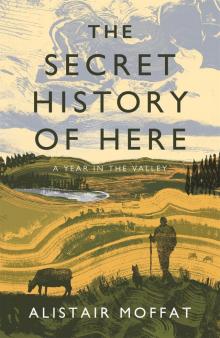 The Secret History of Here
The Secret History of Here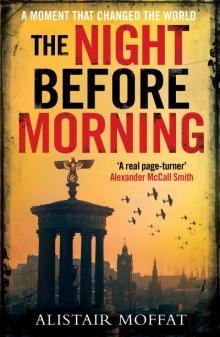 The Night Before Morning
The Night Before Morning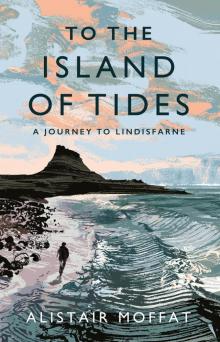 To the Island of Tides
To the Island of Tides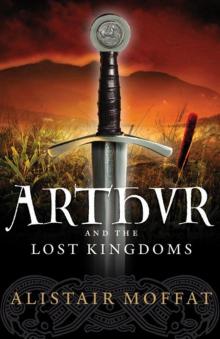 Arthur and the Lost Kingdoms
Arthur and the Lost Kingdoms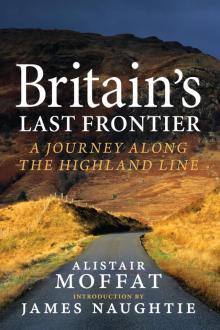 Britain’s Last Frontier
Britain’s Last Frontier The Faded Map: The Lost Kingdoms of Scotland
The Faded Map: The Lost Kingdoms of Scotland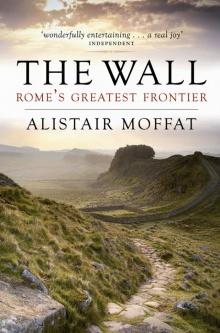 The Wall
The Wall